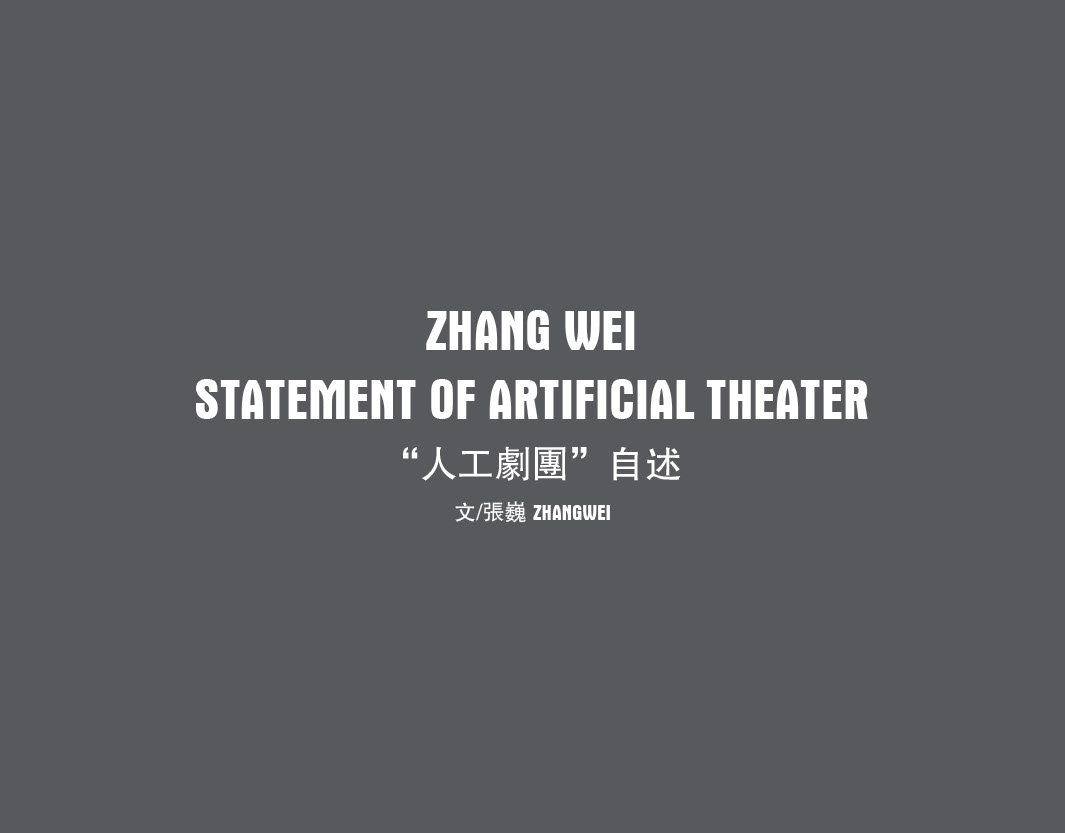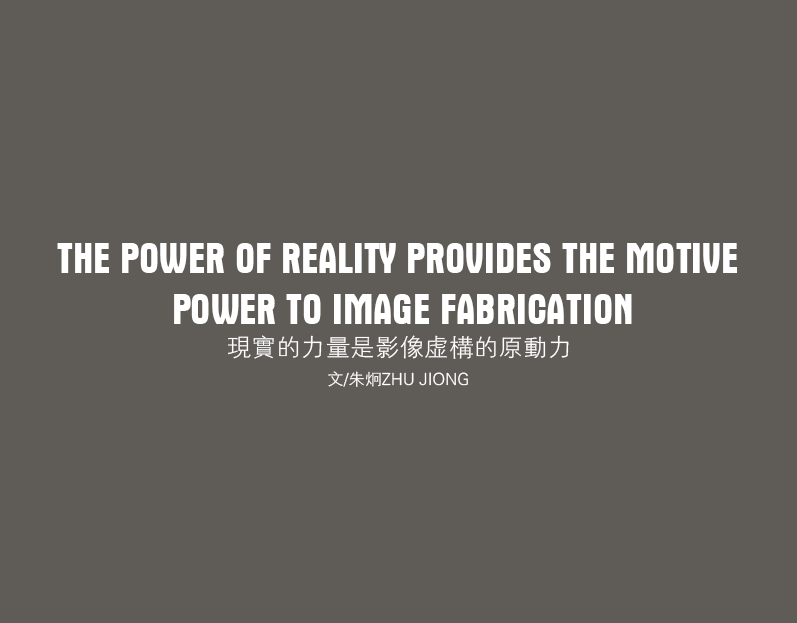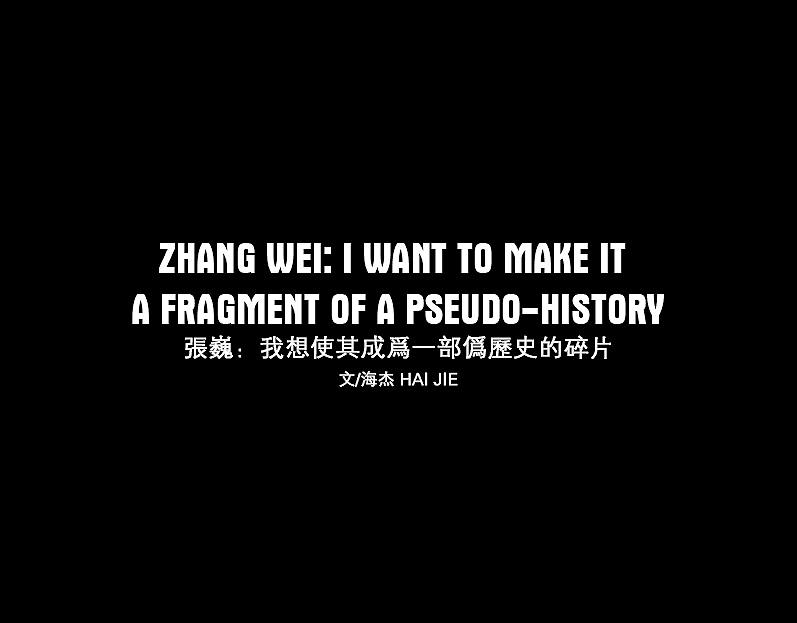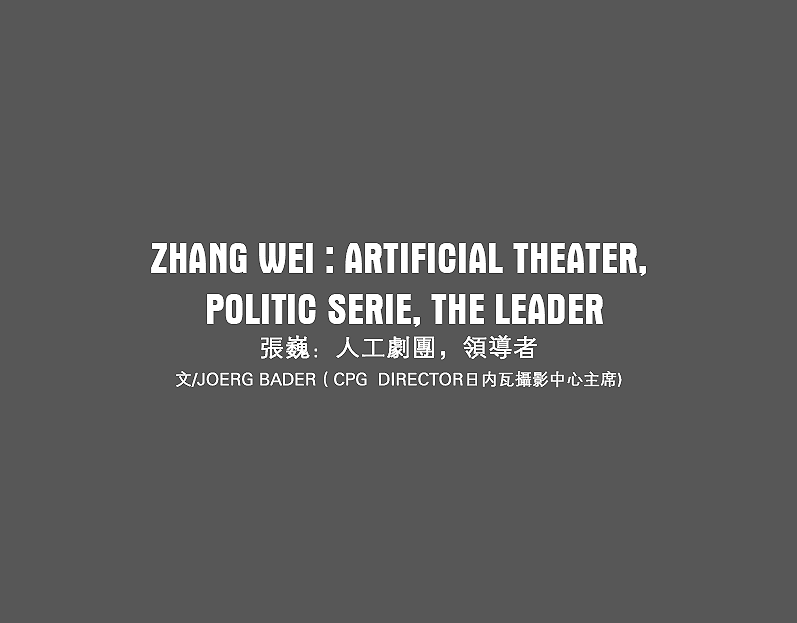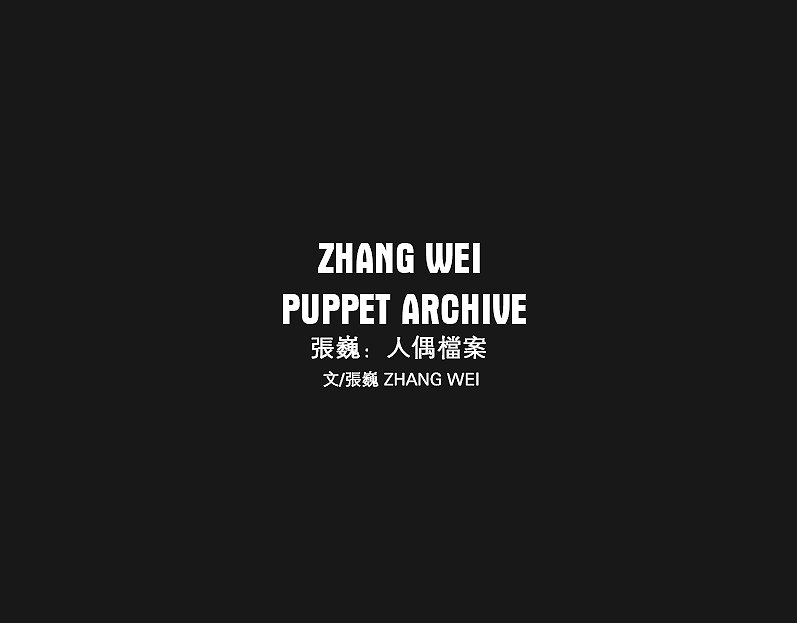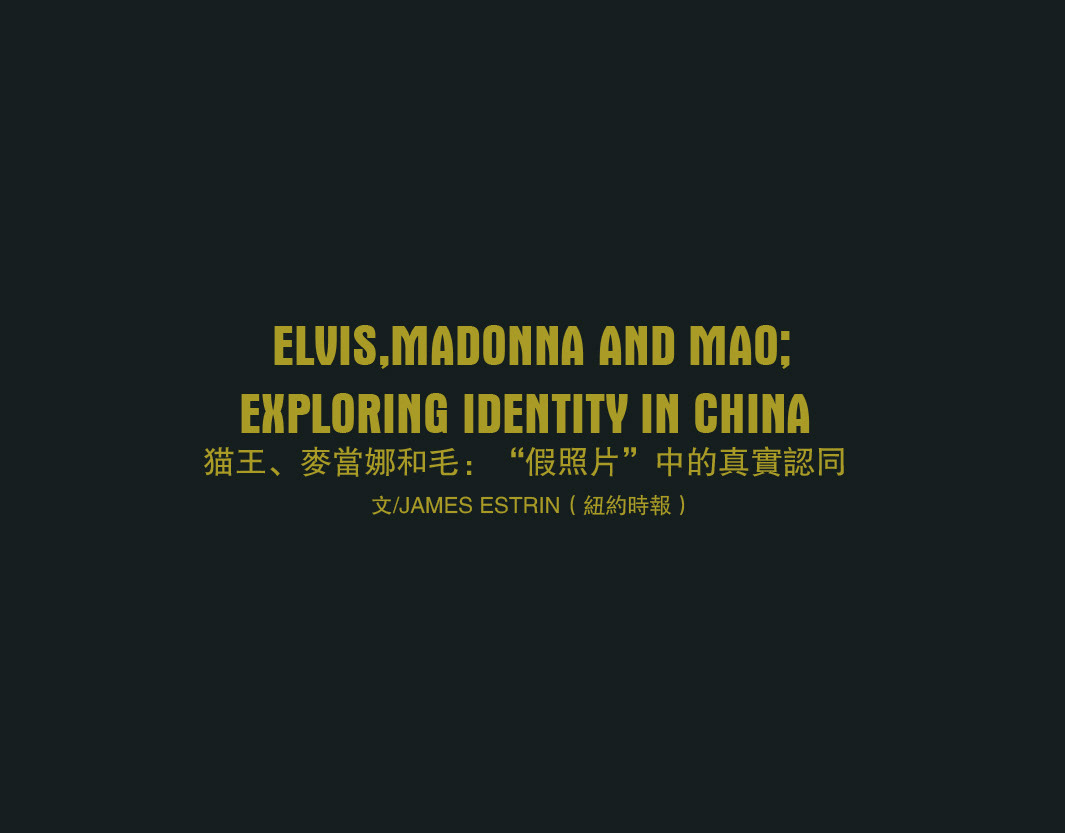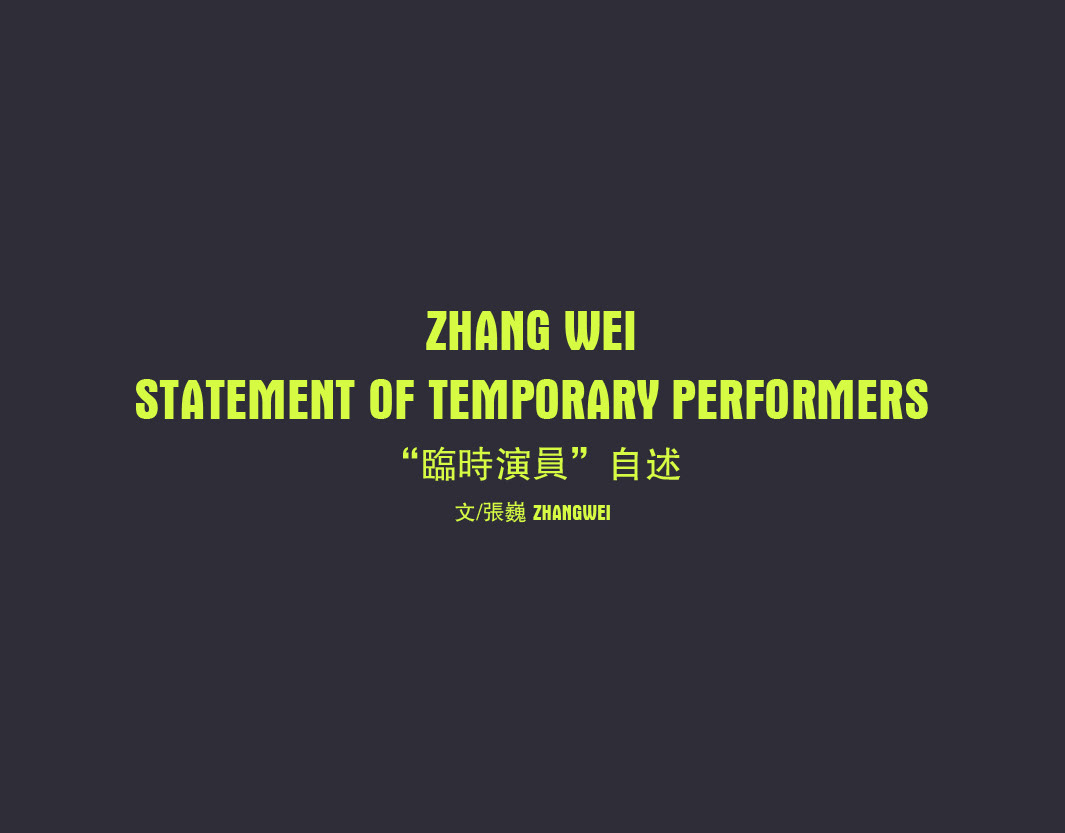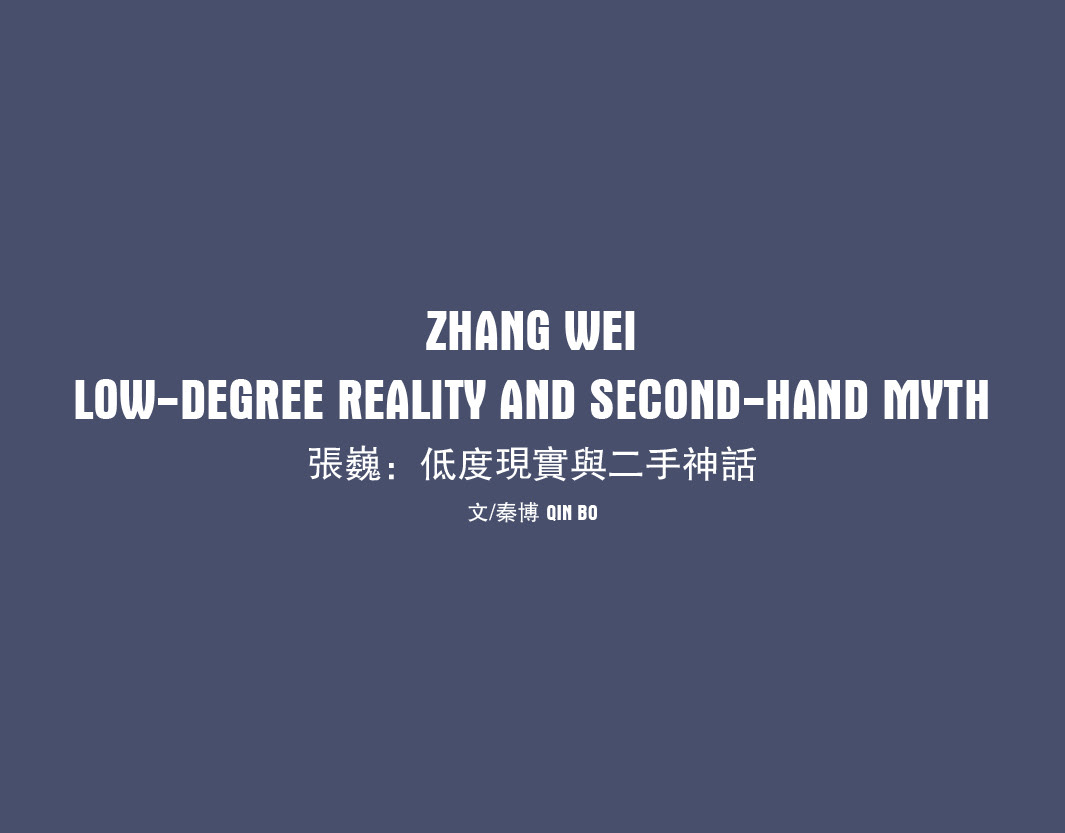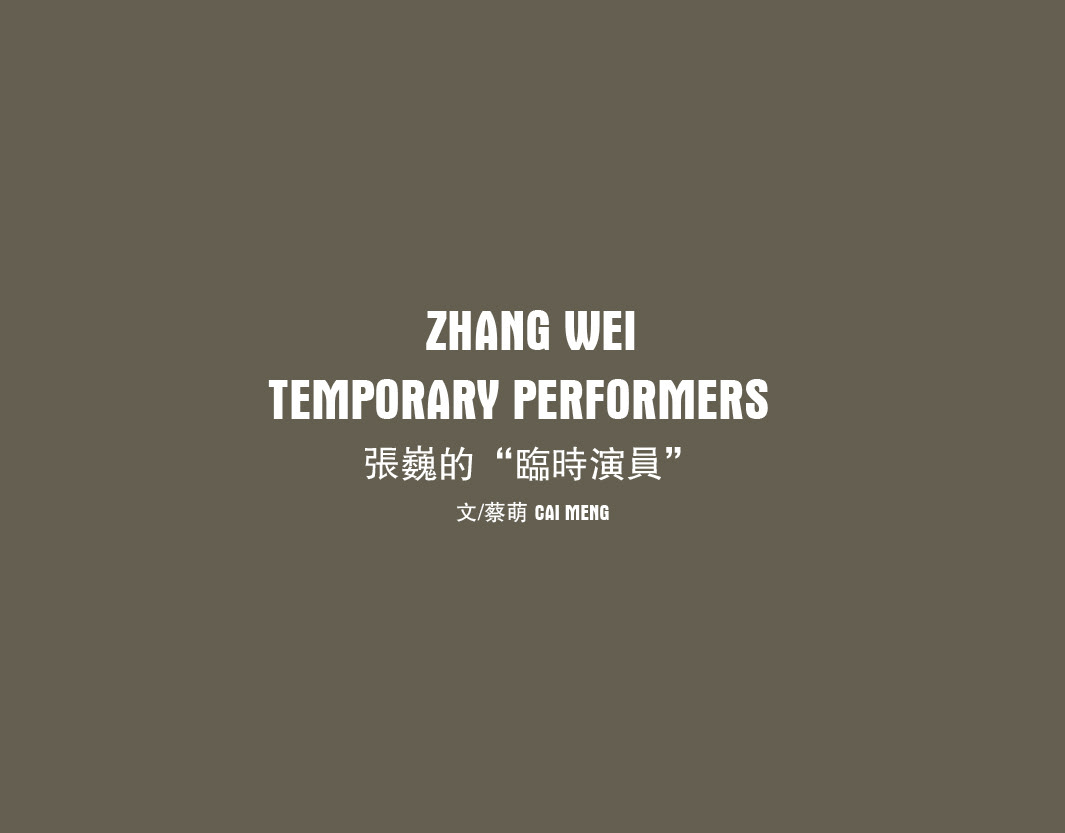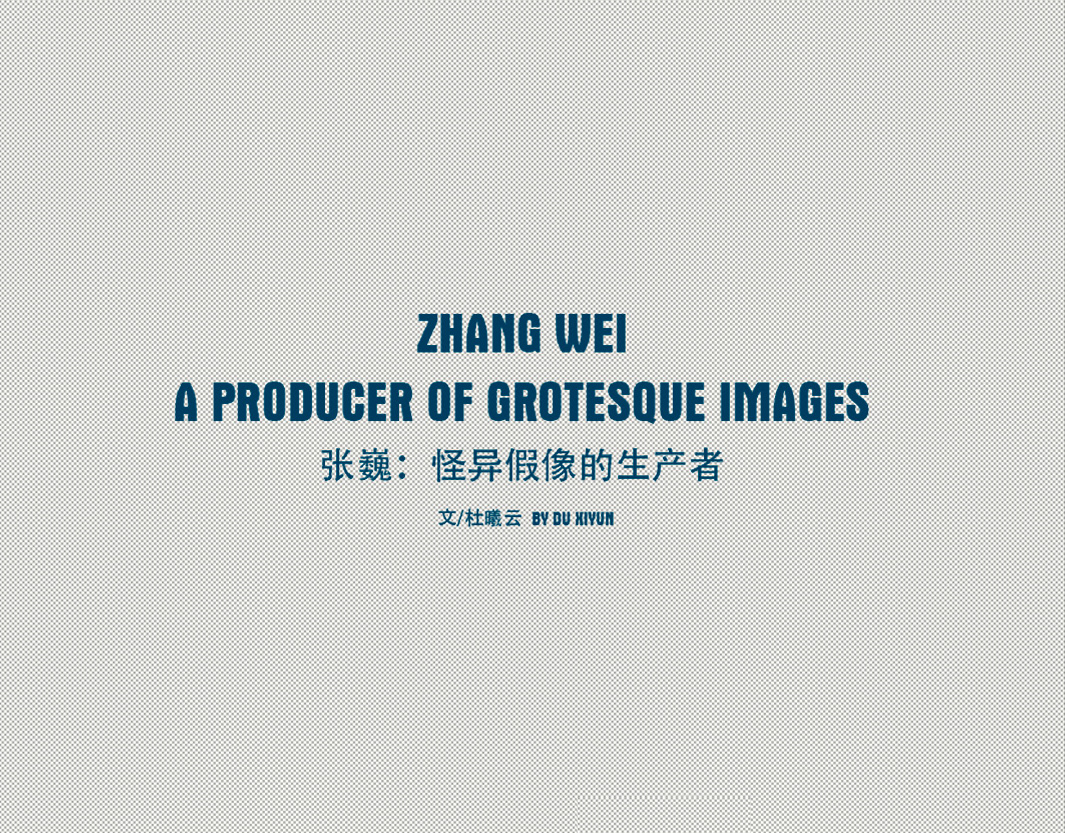張巍:從麻煩製造者到偶像製造者
文 / 海杰
深入藝術史練習與現實解剖,是藝術家張巍創作的主要面向,也是張巍為觀眾熟知的路徑,而那些早期的作品似乎被後來的作品的光環(以《人工劇團》為主)掩埋,比如身邊朋友閒聊和聚會時的不設防(醉酒、裸睡、大笑、扮醜甚至是浴缸裡自拍)肖像與某個場景並置的方式的作品《無聊日記》,通過無厘頭的方式來釋放出一種基於現實的無聊和荒誕性。這恰恰揭示了其後來作品的一貫生產方式:遊戲性。
張巍早期的作品,正是以這樣的面貌來紓解對於現實生活的苦悶和處於這樣的社會語境中自我的精神狀況。在《無聊日記》裡,張巍展示出自己作為一個麻煩製造者的角色,甚至在現實生活中,他也是一個遊戲深度玩家,徹夜的虛擬角色扮演,往往會給他帶來兩重空間:虛擬世界裡暴力的狂歡與現實世界裡身份的迷失。
事實證明,他後來的作品正是藉助於這種遊戲精神來深挖現實層面的身份議題。
在《某一個死者的畫像》裡,他用攝影的方式來勾連古典繪畫中的身份構成,由他自我換裝扮演和拍攝,並且經後期PS拉伸的死者屍體,躺在舖有白布,如同棺材切片的狹長空間裡,這些攜帶著礦工、農民等身份的屍體,衣衫襤褸,死不瞑目,像經歷了一場突然意外變故,不再是德國畫家漢斯·荷爾拜因《墓中的基督》中基督形容枯槁、肌肉塌陷的神性身份。張巍正是通過這樣的現實身份與藝術史中神性身份的互動,來指涉現實社會中被遺棄,且得不到救贖的身份群體。
甚至可以這樣說,在這裡,藝術史等同於張巍的遊戲資源,他需要藉著這套機制回到現實世界,其中包括《不知名婦女肖像》,就是藉助於荷爾拜因筆下的婦女側身肖像,用拍攝的普通人(民工、性工作者)肖像素材戲仿了另一群不知名婦女的肖像,在這裡,這些肖像的構成,如同他的通關遊戲,在逐步構造的過程裡,他最後展示出這些身著華服的婦女眼神裡透露出的呆滯、絕望與哀傷。
而跨度最大的作品《臨時演員》幾乎是鋪設了除《無聊日記》和《某一死者的畫像》之外的所有作品的道路,它既是這些作品的素材,又是單獨成立的作品表達。在《臨時演員》裡,他僱傭城鄉結合部的民工、群眾演員和兒童進行拍攝。之後又將他們的眼睛通過PS技術進行互換,從而製造出一種令人感到不適的神情狀態和圖像,這裡面每個人幾乎都是病態的,像剛從手術現場返回。從這個系列開始,能看出他已經有一種「造人」的野心。值得一提的是,在《臨時演員》兒童篇中,他「放棄了少兒天性浪漫、自由、天真的主觀意念,試圖以「一個過來人」的角度,穿越時光碎片,回到自己的過去。」遵循自己的童年記憶,調動自己成長、受教育、被關愛、被限制等元素為作品創作的訴求主線,用圖片來尋找表達關愛與傷害的矛盾主題。這些被拍攝的孩子流露出來的迷茫與感傷,在紅領巾和粉色背景的曖昧對照裡,更加劇了其中的悲劇色彩。當然,在藝術家反哺自我童年的記憶中,包括他母親在陝西的一個劇團工作的記憶,因此,他從小就有機會在演出的時候,站在後台觀看各種劇目的表演。後來他的作品也與此有關。
使他一舉成名的作品就是這個負責「造人」的《人工劇團》系列,從名字上看,更像是一個玩偶戲的團體,但事實只是他一個人的狂歡與演繹。他通過再次啟用《臨時演員》的「皮膚」和「毛髮」來構造一系列明星陣容。在《人工劇團》中,出現了三個身份分支:領導者(政治明星)、大明星(娛樂明星)、不知名婦女肖像(古典油畫中的女性角色)。有了這樣的序列,張巍開始大量採集適合於造像的肖像素材,最基礎的拍攝是他創作的必要基礎,這些肖像素材,有來自周圍的朋友,也有志願者。然後,他就通過網絡搜索,來選定一款明星的經典肖像來進行仿製,這個仿製的過程就是利用PS技術建模、拼貼、打磨、細化直至完成的過程。於是,我們在展出中看到了很多尺寸很大、皮膚精細的名人肖像,比如普京、卡扎菲、金正日、薩達姆等政治明星,比如山口百惠、奧黛麗-赫本、李小龍等娛樂明星,由於這些名人肖像的資源稀缺性(因為大多數人已離世),觀眾會在觀看作品時心生疑惑:這些照片文件是從哪裡來的?他們能分辨出每個肖像的歸屬,但會感覺到某種異樣。
事實上,他看到的李小龍,並不是真正的李小龍,而是由幾百個人的皮膚湊成的貌似李小龍的人,這個舉動使張巍的作品深諳當下消費主義的內在邏輯——明星就是大眾來塑造的,我們批評一個明星的時候我們批評的是他背後構成支撐起他的群體。張巍造的這些人既是真實的,又是虛無的。我們面臨這些圖像的時候,每個人都是經過整容的,鼻子是組合的,眼睛是組合的,頭髮是植入的……在這個圖像海洋中,任何人都可以通過PS達成一件事實,包括歷史照片也有大量是造假的,從這個層面來講,張巍的作品具有開放性。
這是他關於身份重構的一次次實驗, 明星,作為消費和生產中間最耀眼的一環,他們和異化程序裡的「物」構成了消費的兩大支柱。這些媒體整天報導的明星,都具有共同的特徵,他們「作為一個活生生的人類存在的景觀代表,……他們通過戲劇化表現的社會勞動成果的副產品,體現了常人難以達及的社會勞動的成果,這一社會勞動成果的副產品竟魔法般地將自己置於社會勞動成功之上,並作為它的最終目標:權力和休閒——決策和消費是這一永遠不被置疑的過程的主要部分。」 《人工劇團》裡的領導者和大明星符合這樣的描述與認識,但領導者或許更為自由,只是這個自由是大眾基礎塑造、支撐和維護的。他們「像明星一樣,在舞台上表演的景觀代理人與個人是矛盾的;非常明顯,他是自己個性的敵人和他人個性的敵人,這是一樣的。為了作為一個典型進入景觀而被認同,為了將自己認同為順從物的過程的一般法則,景觀代理人拒絕了所有自主(AUTONOME)的品質」,這裡的「順從物」就是「景觀代理人」所代理的景觀:消費的大眾基礎拼湊起來的意志。這也是張巍作品在合成過程完成之前的所有行為的總和,這些總和恰似PS圖層最後合併的那一刻,當合併命令發出,最終退出PS進入大眾視野之後,意味著那些面孔拼湊、構成、塑造的他們的代理人——明星誕生,但明星再也分解不成面孔的零碎狀態,就像合併後的圖層再也沒法分層。
在明星的表情中,就連作為大眾基礎的個體,都未必能尋找到屬於自己的身上的那部分到底在哪一塊,甚至,他或許只能感受到某種熟悉,是他們的消費習慣劃定了明星的活動範圍和活動姿勢,而反過來,明星又以「戲劇化」的方式使大眾感到幸福。
這也是張巍作品之於當下的「生產——消費——生產」模式的內在邏輯隱喻,尤其是關於身份的生產與消費循環。在這個隱喻中,我們能從《人工劇團》裡看到那些明星怪異的肖像中釋放出某種商品的特性,或者後現代矽膠的材料感。這容易使我們聯想到整容、隆胸等行為,甚至是謠言、緋聞等構成的明星生產佐料。整容,不是整容者需要這種“好看”,而是大眾需要,所以「好看」形成了體制,成了「順從物」。隆胸也一樣,平胸並不妨礙她們成為明星,但明星需要站在大胸的序列中,像《自由引導人民》那樣,為大眾解除靈與肉的平衡之困。
張巍正是通過這層技術的流程來還原這種生產和消費機制。
ZHANG WEI: FROM TROUBLEMAKER TO IDOLMAKER
HAI JIE
The contemplation of art history and the dissection of reality is perhaps the main focus of Zheng Wei’s work. This is the creative process that his fans are most familiar with. His later works, entitled Artificial Theatre, seems to have stolen the spotlight from his earlier works. A good example would be his images in The Diary of Boredom, where candid portraits of friends (shown being drunk, sleeping naked, laughing out loud, making faces and even taking selfies in a bathtub) are juxtaposed with a random setting. Zhang’s expression of absurdity and boredom in reality through a seemingly senseless approach in his creative process, reveals a consistency in his works that toys with the idea of gaming.
Wei’s earlier works are packaged this way to express the agony of real life and the mental state of the self in society. In The Diary of Boredom, Zhang Wei portrays himself as a troublemaker, in reality he is a zealous player of computer games. Playing different virtual character roles all through the night opens up two dimensions of existence to him: the violent yet amusing virtual world and the loss of identity in the real world. In fact, through this spirit of gaming, Zhang was able to explore the issues of identity in real life in his later works.
In the series Portrait of the Dead, Zhang uses photographs to illustrate the construction of identity in classical paintings. He photographed himself dressed up as a corpse laying on top of a piece of white cloth. The photos are then edited with Photoshop to appear elongated as his lifeless body is laid in a space that mimics the narrow compartment of a coffin with a cross sectional view. This series shows ‘dead bodies’ dressed up as coalminers and peasants in tattered clothes with their eyes still open, as if they passed on in a sudden and tragic incident. These art pieces no longer resemble the divine identity of the shrunken and withering body of Christ in Hans Holbein’s painting, The Body of the Dead Christ in the Tomb. Through the interaction between real-life identities and divine identities in art history, Zhang exposes the forsaken group of identities that have no hope for redemption in our current society.
One can say that art history is Zhang’s inspiration, in which he relies on as reference to reality. For instance, he photographed a group of ordinary people (workers and sex workers) to create a portrait of a group of unknown women which mirrors the side portraits of women titled Portrait of Unknown Woman by Holbein. Here, the construction of these portraits is similar to the progression of a game. In the process, he gradually reveals perplexity, despair and sorrow through the eyes of these elegantly clothed women.
Temporary Actors has paved the path for all his other works except for The Diary of Boredom and Portrait of the Dead. Not only does it stand as an independent work on its own, it also works as a reference and inspiration to his other art works. In the Temporary Actors series, he hired workers living in the outskirts of the city, amateur actors and children to be photographed. He then edited their eyes with Photoshop to create unsettling portraits. In this image, almost everyone seems to exhibit signs of illness, as if they have just got out of surgery. From this series on, one can detect Zhang’s ambition for the “creation of mankind”. It is worth mentioning that in the children’s edition of Temporary Actors, he abandoned the preconception that children are romantic, carefree and innocent in nature. And attempts to break through the fragments of time to travel to his own past from the perspective of “a person that has been through it all”. The narrative throughout his creative process abides by the memories of his own childhood, up-bringing, education, the care he received and the limitations he came across. His work is a way of searching for the contradicting expressions of affection and affliction. The children’s look of confusion and sadness in his photographs stand in stark contrast with their red scarves and pinkish background, emphasizing the tragic undertone of the photograph. In particular, Zhang’s childhood memories include the memory of his mother working for a theatre company in Shanxi, where he was able to watch all kinds of performances from backstage. References to this particular experience can be found in many of his later works.
Zhang Wei became well-known through the series Artificial Theater, which has a heavy focus on “the creation of mankind”. Though the title suggests what seems to be a puppet troupe, it is in fact a one-man show filled with his own illustrations. In Artificial Theater, Zhang applied the “skin” and “hair” from Temporary Actors to create a series of celebrity portraits. These portraits are then further divided into three identity categories: leaders (celebrity politicians), celebrities (entertainment celebrities) and unknown women portraits (female subjects in classical paintings). With such division, Zhang begins to amass a number of suitable portraits for sources. These are sourced from his friends and volunteers, essentially the basics of photography is the foundation of his creative process. Then, he uses search engines on the Internet to select a specific type of conventional celebrity portraits to reproduce. During this process, he utilizes Photoshop tools to create a collage and polishes the details until it is finished. Therefore, the portraits we see of celebrities such as Vladimir Putin, Muammar Gaddafi, Kim Jong-il and Saddam Hussein as well as Momoe Yamaguchi, Audrey Hepburn and Bruce Lee are very detailed and have flawless skin. Since the source of these portraits are limited, (as most of the subjects in the photos have passed on), the viewer is bound to become doubtful about his art works and question where the photos came from. Though these photos may cause an eerie feeling, the celebrities in these portraits are easily identified.
In fact, the Bruce Lee Zhang sees is not truly Bruce Lee himself, the Bruce Lee portrait he created is actually a visual collage of skins collected from hundreds of people that is made to resemble Bruce Lee. This enabled Zhang’s work to echo the inner logic of consumerism, which is that celebrities are moulded by the public. When we criticize a celebrity, we are actually criticizing the mass behind their existence. The characters Zhang created in this series are both real and fictional. When faced with these images, we realize that they have all undergone cosmetic surgery, their noses and eyes are reconstructed and their hair is implanted. In this sea of images, anyone can fabricate the truth through the use of Photoshop, even historical photos are frequently forged. In regards to this, Zhang’s work is open to various interpretations.
Zhang experiments with the reconstruction of identity in Artificial Theater. Celebrities are the focus of consumerism and production, forming the cornerstone of consumption along with the products (material objects) in the alienation process. The celebrities that we see in the media all have something in common. As Guy Debord wrote in The Society of Spectacle, “Media stars are spectacular representations of living human beings… Themselves incarnations of the inaccessible results of social labour, they mimic by-products of that labour, and project these above labour so that they appear as its goal. The by-products in question are power and leisure the power to decide and the leisure to consume which are the alpha and the omega of a process that is never questioned”.
The political leaders and celebrities in Artificial Theater fit Debord’s description and insight. Perhaps political leaders have more liberty, which is nevertheless constructed, reinforced and safeguarded by the public. Debord also mentioned that, “The individual who in the service of the spectacle is placed in stardom's spotlight is in fact the opposite of an individual, and as clearly the enemy of the individual in himself as of the individual in others. In entering the spectacle as a model to be identified with, he renounces all autonomy in order himself to identify with the general law of obedience to the course of things”. In this passage, the “obedience to the course of things” refers to the spectacle the individual is in service of. It is also the collective consciousness of mass consumerism. This is the totality of Zhang’s working process leading up to the completion of his work, and the totality resembles the moment all the layers are merged in Photoshop. As soon as these layers are combined, the final image leaves Photoshop and enters the view of the public, just as a cosmetically reconstructed star being re-born into the world. But he or she will never be able to reverse the cosmetic constructions, as merged layers can never be separated.
Though the body is constructed by the mass public, one may not be able to identify the pieces that belong to themselves in the expressions of the celebrities. Perhaps they would be able to feel a sense of familiarity. It is their consuming habits that determine the scope and style of movements celebrities make, at the same time, these celebrities entertain the public with various dramas.
Zhang’s work is an analogy of the logic behind the “Production- Consumption- Production” model in today’s society, even more so in relation to the production of identity and the cycle of consumption. In this analogy, we can see that the uncanny portraits of celebrities in Artificial Theater reveals special attributes of commodities, or postmodern silicon-like texture. This easily reminds us of the behavior of undergoing cosmetic surgeries and having breast implants, as well as other things that fuels the production of a star, such as gossips and scandals. Plastic surgery is a public want rather than an individual desire to “look good”, hence “looking good” becomes a system, which is in the form of “obedience to the course of things”. As for breast implants, being flat-chested does not stop one from being a celebrity. Just as in La Liberté Guidant le people, to become a star, there is a need to obediently stand in line with having large breasts, in order to absolve the anguish between soul and flesh felt by the public.
Through his technical process, Zhang Wei restores the said system of production and consumption.
Translated by Ran Wei/魏然
寫作者:海杰,從事獨立策展和影像批評。曾參與各大重量級攝影活動包括:平遙國際攝影大展藝術委員會委員,資助獎評委; 2014濟南國際攝影雙年展實驗展策展人;2015集美x阿爾勒國際攝影季策展人;2016集美x阿爾勒國際攝影季發現獎提名人;2017連州國際攝影年展策展人及2018南京藝術學院美術館首屆AMNUA國際攝影展策展人等。
HAI JIE, is an independent curator and critic who specialises in photography. Throughout the years, he has participated in many prominent photography festivals including being on the committee of the Pingyao International Photography Festival Art, curator of 2014 Jinan International Photography Biennale, curator of 2015 Jimei x Arles International Photography Festival, award nominee of 2016 Jimei x Arles International Photography, curator of 2017 Lianzhou International Photography Festival, and curator of 2018 the 1st AMNUA International Photography Exhibition.
